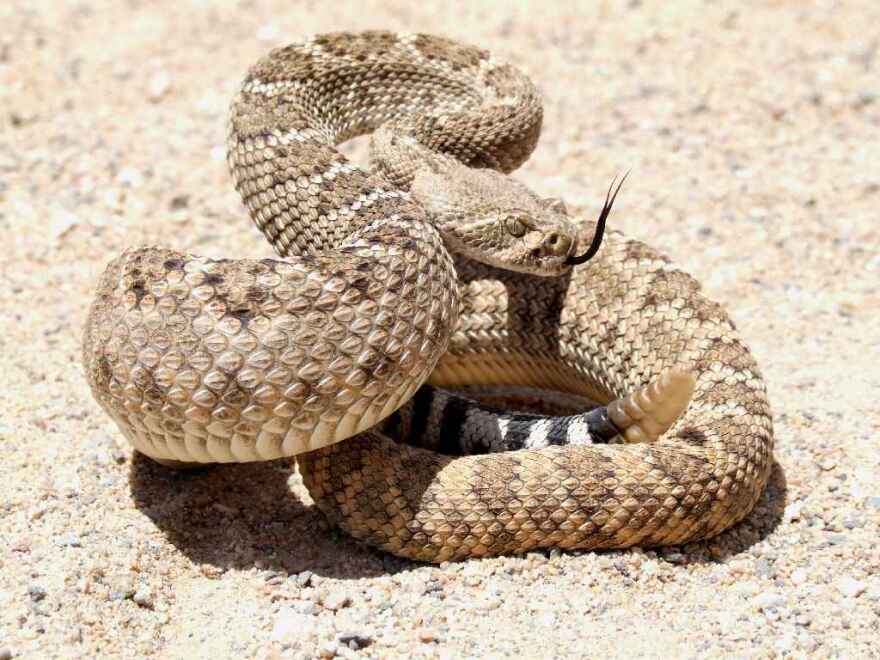http://stream.publicbroadcasting.net/production/mp3/knau/local-knau-951126.mp3
Flagstaff, AZ – Earth Notes: The Bite of the Rattlesnake
Everyone knows rattlesnakes are dangerous. But to say they're simply venomous is as overly simple as it is to say that the Southwest is dry.
Rattlesnakes abound in the Southwest thirteen species occur in Arizona alone. Each has its own venom recipe. And each snake can inject widely differing quantities of venom with a bite, from lots to none at all.
As a result, treating rattlesnake bites can be a challenge for medical responders, just as understanding how rattlesnakes and their prey are evolving is an ongoing challenge for ecologists.
Medical authorities report that the number of serious rattlesnake bites is rising. Recent reports in the press have suggested that this rise is linked to the rapid evolution of more toxic rattlesnake venom. But a new study by researchers at Loma Linda University and the University of Northern Colorado indicates that's unlikely.
The scientists, William Hayes and Stephen Mackessy, say that venom chemistry evolves slowly. They also point out that changes in the overall severity of bites are likely the result of changes in human behavior.
For example, the popularity of snake handling on television might encourage copycat behavior in viewers. And unlike jeans, wearing shorts can't do anything to intercept some of a snake's venom.
It may just be that more people are spending time in rattlesnake habitat than before and that the notion of snakes becoming more dangerous is an example of how the media loves a good story.
-David Lukas


